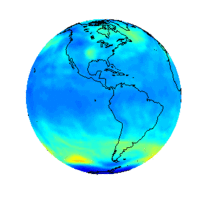Spatio-Temporal Stochastic Modelling
The spatio-temporal stochastic modelling group works with development and application of models for spatial and spatio-temporal data. The main themes are computational and theoretical aspects of the models, along with applications to data. The group's theoretical work includes Markov random fields based on stochastic partial differential equations, Laplace random fields for non-Gaussian data, and Lagrange fields constructed as random perturbations of Gaussian fields.
Application of the models to data is an important part of the group's work and cover a broad range of applications, such as extreme values analysis, fatigue and risk analysis, and analysis of environment, climate and oceanographic data. The group collaborates actively with scientists in environmental and climate research through the Centre for Environmental and Climate Research (CEC).Some research projects in Extreme Values analysis include:modelling rainfall to calculate the risk of flooding; modeling storm damage to forests.
An application: Analysis of satellite measured ozone
On October 24, 1978, NASA launched the near-polar, Sun-synchronous orbiting satellite Nimbus-7. The satellite carried a TOMS instrument which provided global maps of atmospheric ozone. The data measured by the satellite has been calibrated andpreprocessed into a ``Level 2'' data set of spatially and temporally irregular Total Column Ozone (TCO) measurements following the satellite's orbit.

An important question for this, and other data, is to construct complete estimates based the irregular measurements. Here Level 2 data from October 1st, 1988 is used to illustrate how spatial stochastic models can be used to construct daily maps of global ozone.
